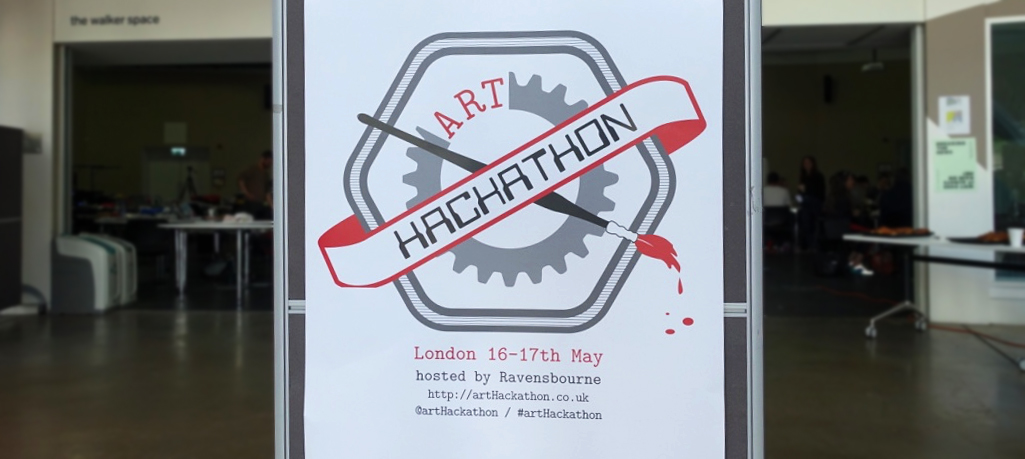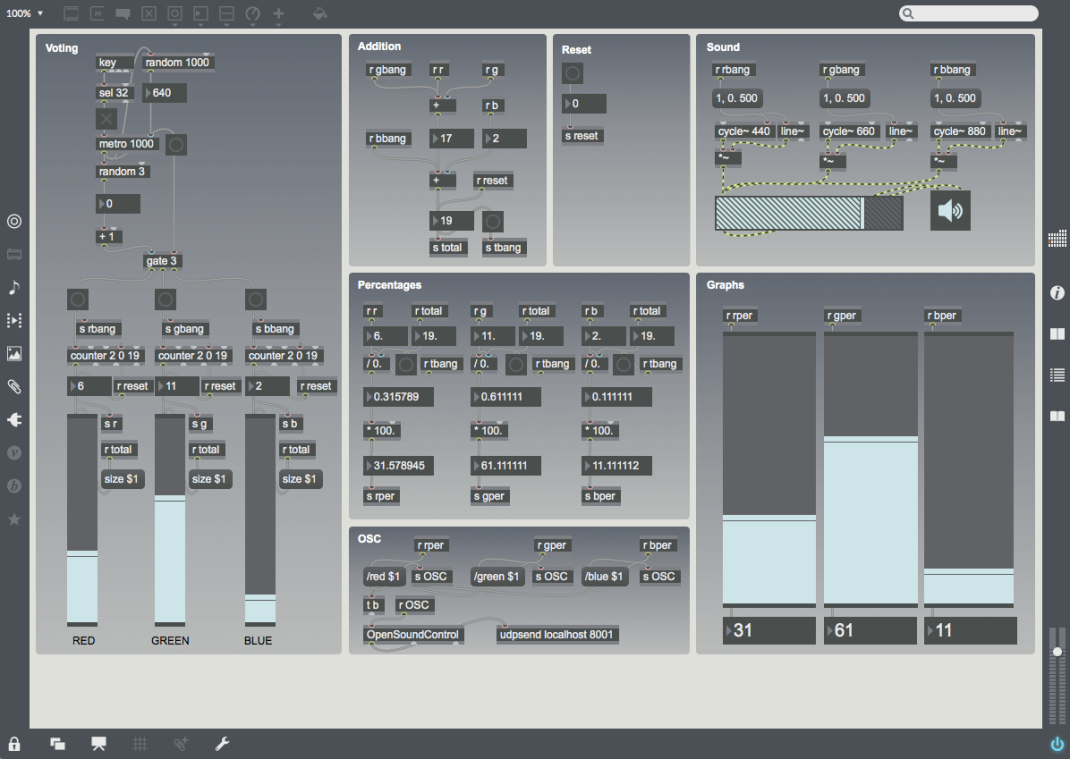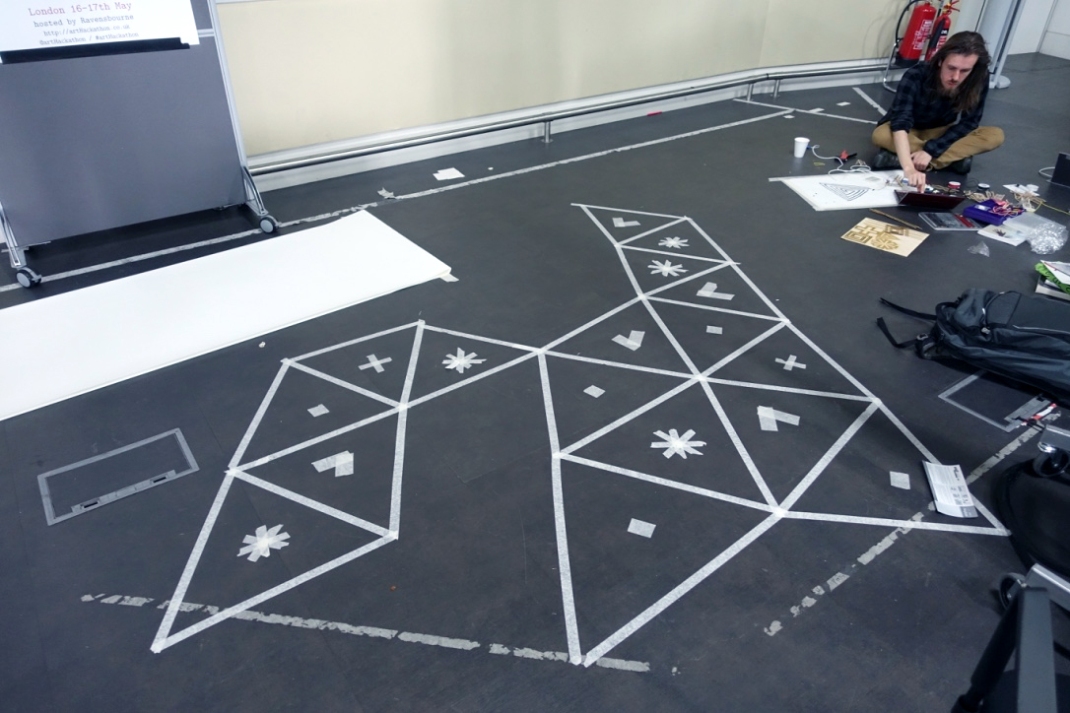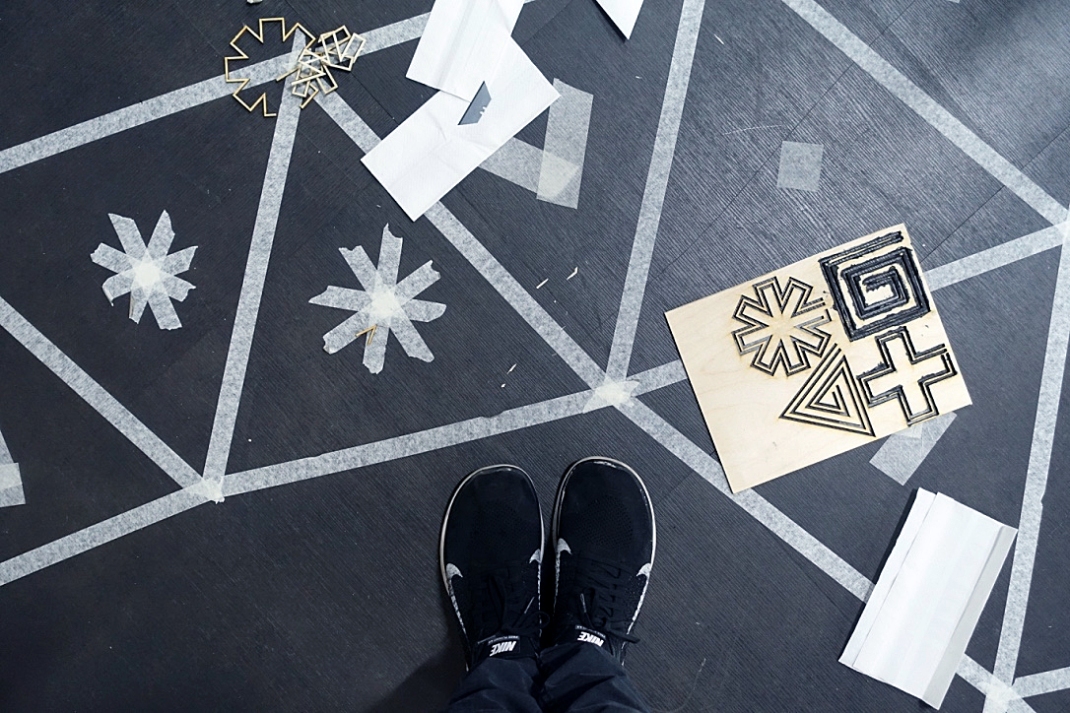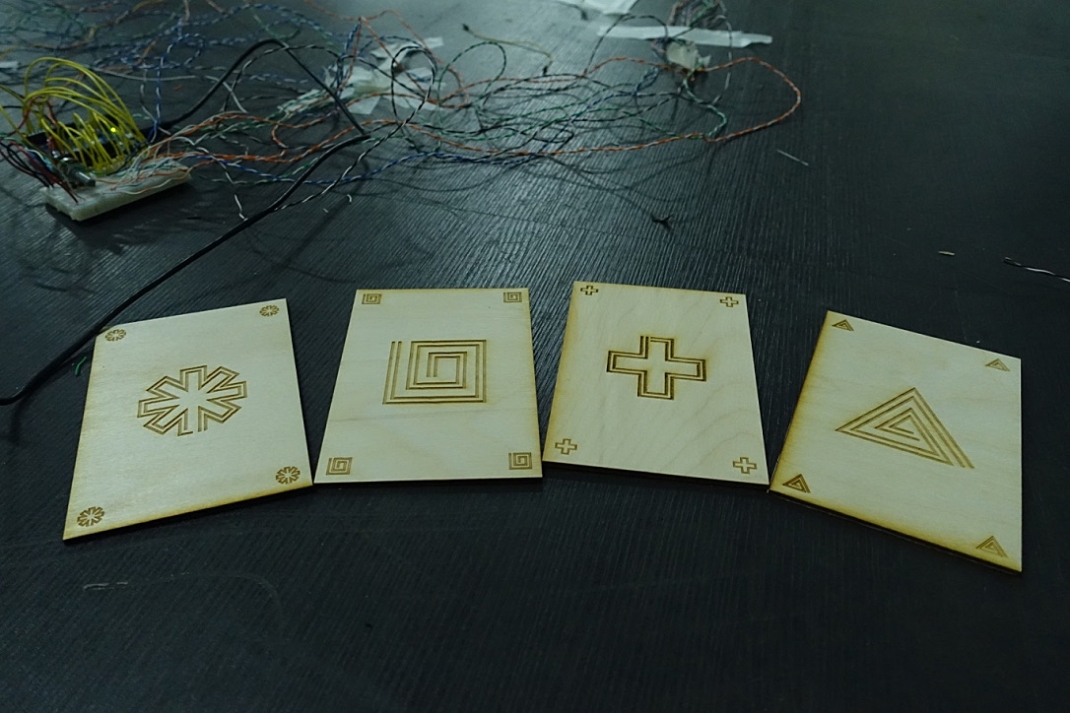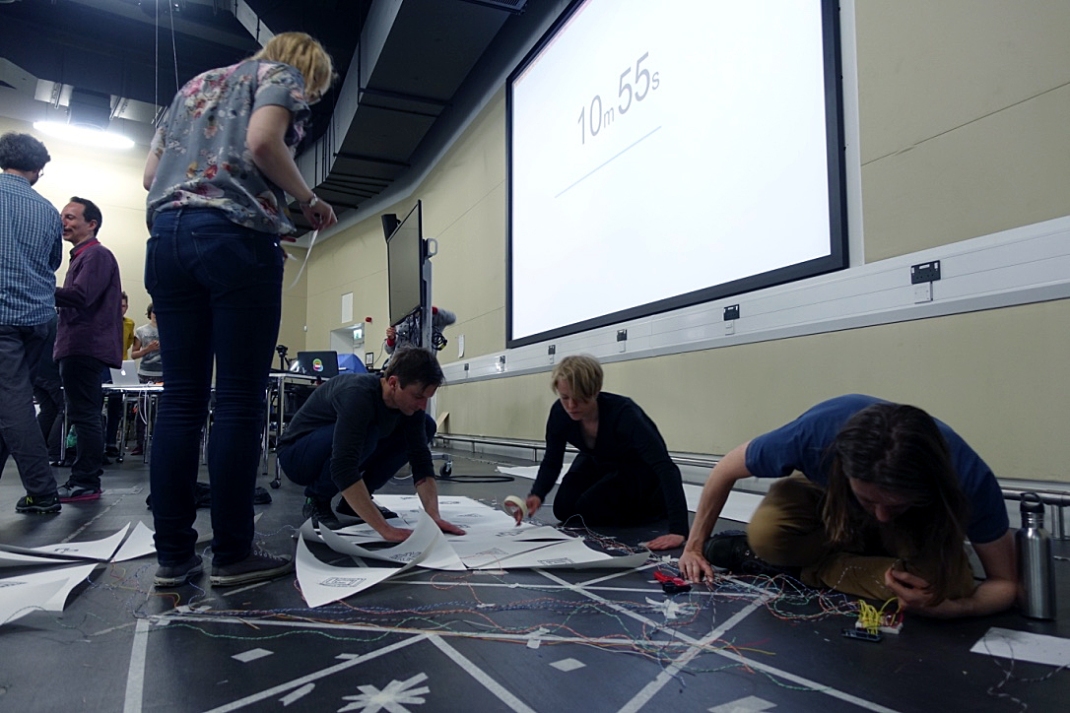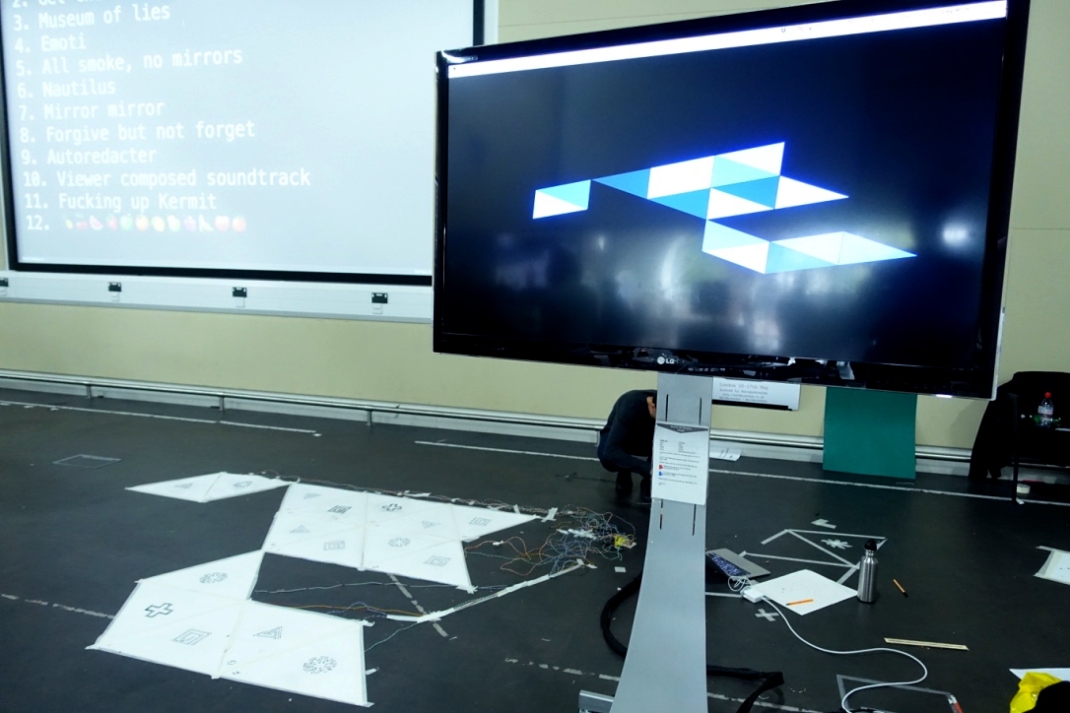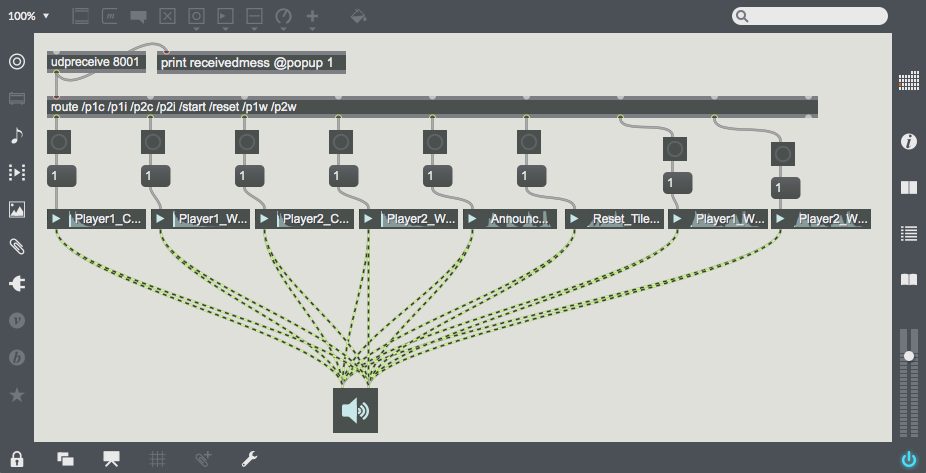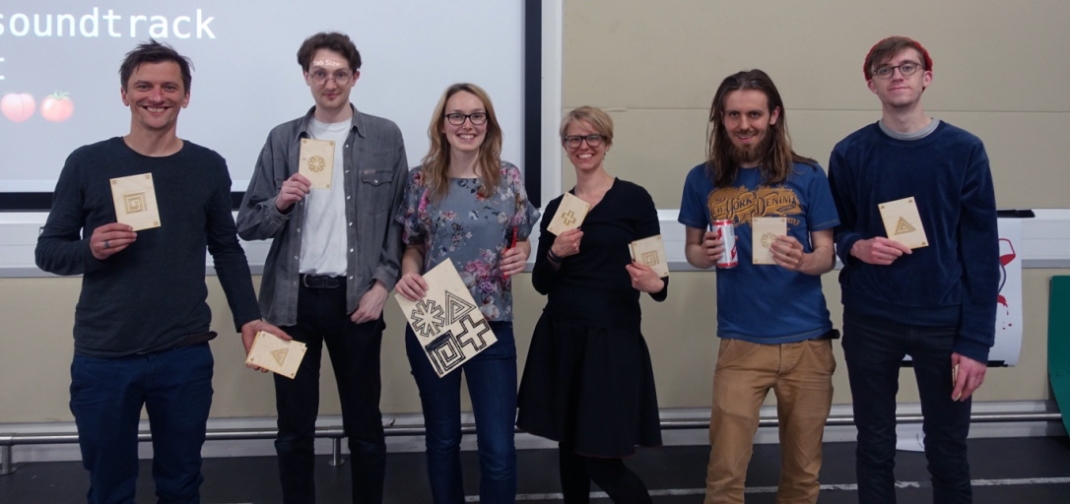This weekend I attended the Art Hackathon at Ravensbourne in North Greenwich. It was my first hackathon so didn’t know quite what to expect, but it turned out to be a great experience full of different people and skills and ideas.
The theme of the hackathon was “trickery”, which could be interpreted any way we liked; some examples given to us were camouflage, illusion, distraction, and propaganda.
But before the hacking began, we were given talks by a handful of guest speakers kind enough to attend the event:
Each gave a short talk about their work, ideas, and processes, hopefully inspiring us to think a little differently over the next 48 hours.
Then it was time to start making something. A surprisingly large amount of people gave a 30 second pitch of their idea relating to trickery, ranging from smoke and mirrors to a “museum of lies”. I ended up opting to join a group who wanted to explore the illusion of control, with skills ranging from data visualisation and UI design to writing and photo-retouching. We shared ideas and talked a lot about methods of control, freedom, agency, and how much our thought processes are influenced by external factors – with or without our knowledge or consent.
We threw about a bunch of ideas: manipulating a user to behave a certain way, perhaps in a game environment, without them realising; presenting a user with an interface and game to control the light installation in the entrance of the O2 arena (which really did nothing); creating a “collaborative” visual artwork that was “controlled” by the audience’s tweets (but in reality was algorithmically generated).
The last idea interested me most, and out of all the options was the most feasible for me. So I set to work creating an algorithmic voting system, in Max/MSP, that would simulate counting incoming votes (accompanied by little sound effects to help sell it). The result was a constantly-shifting set of data which could be sent over OSC to other computers or programs to be visualised.
However, we eventually decided to ditch that idea and work towards a game, in the vein of Twister. On the floor are a set of triangular tiles, each containing one of four symbols: a square, triangle, star, and cross. Each player (of which there were two, though further iterations could allow for more) is given a small deck of laser-cut cards, each card displaying one symbol. Players take turns to place down a card, and the opponent has to move to a tile displaying the correct symbol. Once a tile has been stepped on it becomes deactivated; if it is stepped on again, the player who does so loses the game. The aim of the game therefore is to outsmart your opponent and force them onto a deactivated tile.
So, where is the technology in this? Well, the symbols on the triangular tiles were drawn with capacitive paint, and attached via cables to an arduino. Therefore, when somebody stepped on a tile the circuit would complete. Each tile was given a letter A-P, and when it was stepped on the corresponding letter would be sent to a Processing sketch.
The Processing sketch generated a visualisation of the play space, which could be rotated to the correct orientation. When a letter was received from the arduino the corresponding tile would grey out, indicating its deactivated status. If a player then stepped again on a deactivated tile, the screen would flash and display text indicating the winner and the end of the game.
My main contribution to the project was the sound effects. When a round begun, a tile was deactivated, or a player made an error, an OSC message was sent from Processing to Max. This would trigger a relevant sound effect, from 8-bit style bleeps and bloops made in Ableton to prerecorded announcements (“Player 1, You Win!”) found by the team.
The end product was a legitimately fun game that became quite high-pressure as more and more tiles deactivated. There is a lot of scope for development, from small improvements like implementing a backing soundtrack that speeds up as the game comes nearer to its conclusion (something I worked towards but could not implement for the final version), to creating a modular system that would allow the players to design their own grids. Oh, and making sure all the tiles respond properly — we had a few issues!
Overall I’m pleased with the result and am glad to have spent a couple of days working with people I never would have met, with skills I knew nothing about, on something I never could have conceived. Here’s to the next art hackathon!
Thanks to Theo, Tom, and all of the other people who helped organise and run the event. THanks to the guest speakers and judges who came along — I hope our projects were worth it! And finally, thanks to the team and other attendees for a great weekend of creativity and hacking.

